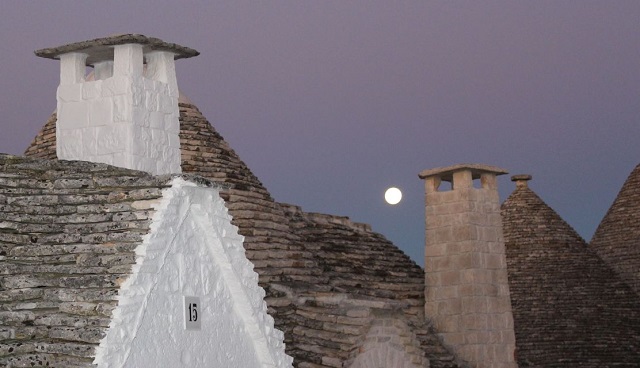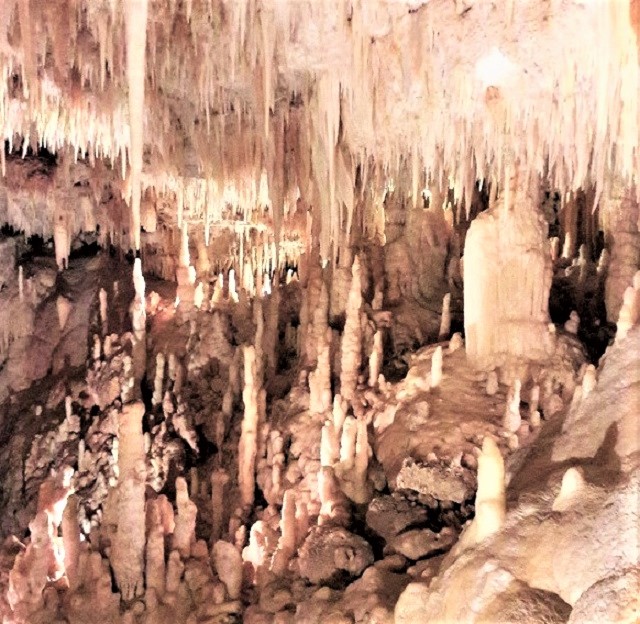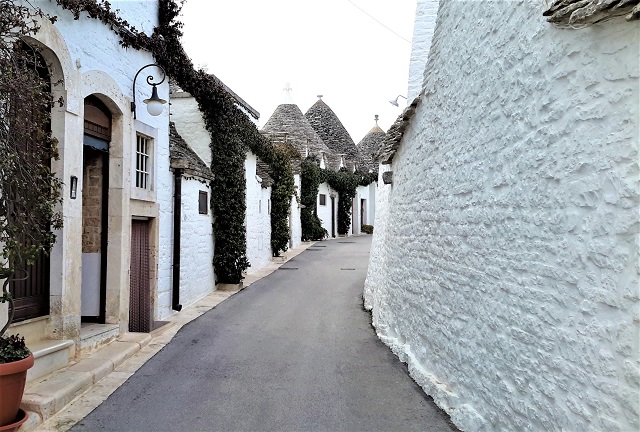Judith Schrut continues her adventures in southern Italy with a snuggly night in a traditional trullo cottage, a hearty breakfast and a dramatic visit to a cave.
The trulli of Alberobello, Puglia: you’ve probably seen them loads of times – in ads for romantic getaways, stylish snaps on Instagram and front covers of Italian travel guides. But there’s a perfectly good reason why that’s so. For the extraordinary UNESCO World Heritage town of Alberobello is truly, or should I say trulli, a magical place.
However, to get the most out of this magic I urge you to follow these three steps. First, plan your visit outside the hot and heavy summer tourist months. Second, skip the hotel scene and stay in a traditional beehive-shaped trullo cottage in the town’s Rione Aia Piccola area. And finally, set your alarm for pre-dawn so you can wander Alberobello’s picturesque lanes and alleyways, explore its secret gardens and climb its rooftops for impressive panoramic views and a sunrise like no other.
On the morning of my dawn walk, the last night’s full moon still lingered, hanging enormous and white and in stunning sync with old Alberobello’s whitewashed walls and rooftops.
 Alberobello at Dawn, photo credit & copyright Rene Koelliker
Alberobello at Dawn, photo credit & copyright Rene Koelliker
For the uninitiated, a trullo (plural: trulli) is a traditional whitewashed drystone hut with a conical roof, found only in Puglia’s Itria Valley. Alberobello is filled with hundreds of trulli, built many years ago as simple shelter for farmers and shepherds. Here they lived, in one round, domed room, along with spouses, children and animals. Some trulli roofs are decorated with primitive or early Christian icons like doves, symbolising the Holy Spirit, or an arrow-pierced heart and cross, symbolising Saint Maria Our Lady of Sorrows.
Nowadays many trulli have been turned into smart but reasonably priced holiday accommodation. I was overjoyed to be given a whole cozy trulli to myself, complete with underfloor heating, kitchenette, luxury bathroom and comfy alcove bed.
Apart from its unique trulliness, one of the best things about Alberobello is its proximity to many other wonderful places to see and things to do. For instance, you can walk or cycle the Itrian Way, visit the ancient olive orchards at Masseria Brancati and sample the ‘liquid gold’ from its 3000 year old trees, taste organic Puglian wines at Amastuola vineyards or sign up for a pasta-making course. Today, we’re off on a spelunking adventure at the Grotte di Castellana.
After a typically generous Alberobellan breakfast of fruit, meat, cheese, homebaked cakes and fresh coffee any way you like, it’s only a short ride to ‘the Meriviglia di Puglia’, the magnificent underground caves at Castellana. Two types of expertly guided tour are available to visitors here, both on offer daily in English. Ours begins with a spectacular tunnel descent into a vast abyss (jarringly called ‘the Grave’), followed by a three kilometer hike to the grotto’s deepest reach.
Winding our way past crystallised curtains, canopies and needles with nicknames like the She-Wolf, the Cyclops and the Pillars of Hercules to match their incredible shapes, we finally arrive at our destination, the spectacular White Cave.
 Deep in the White Cave of Castellana
Deep in the White Cave of Castellana
Judith travelled to Southern Italy as a guest of pugliacycletours.com and agenziapugliapromozione.it. Stay tuned for the next post in her Head for the Heel miniseries.






















